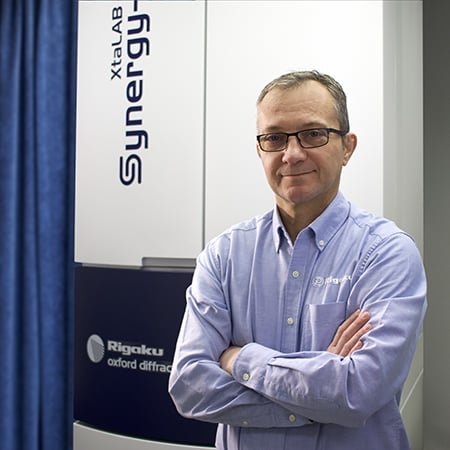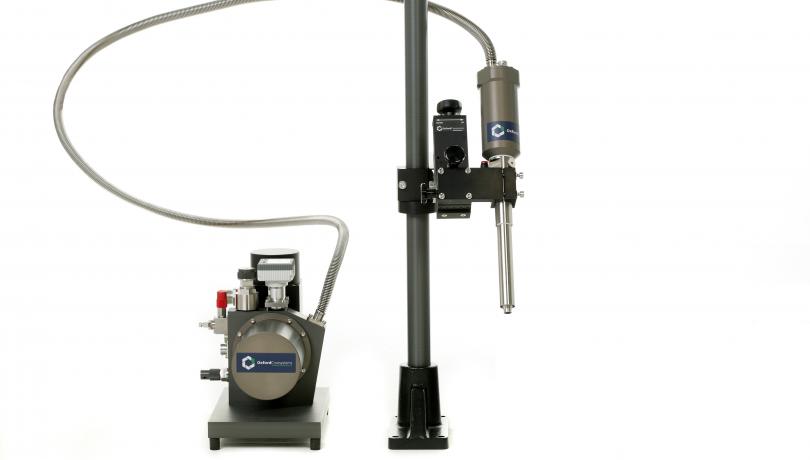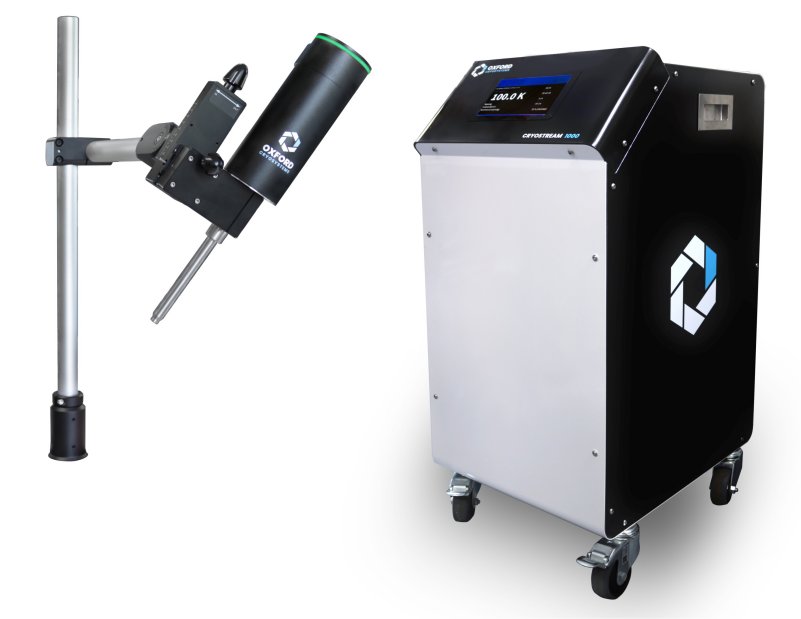XtaLAB mini II
Benchtop Single Crystal X-ray Diffractometer
Single crystal X-ray diffraction on your benchtop
The perfect addition to any synthetic chemistry laboratory, the XtaLAB mini II single crystal X-ray diffractometer will enhance research productivity by offering affordable structure analysis capability without the necessity of relying on a departmental facility. With the XtaLAB mini II benchtop diffractometer, you no longer have to wait in line to determine your structures. Instead your research group can rapidly analyze new compounds as they are synthesized in the lab without having to queue up in the departmental core facility.
.jpg?width=800&height=610&name=XtaLAB%20mini%20II%20benchtop%20single%20crystal%20diffractometer%20(door%20open).jpg)
.jpg?width=800&height=610&name=XtaLAB%20mini%20II%20benchtop%20single%20crystal%20diffractometer%20(door%20closed).jpg)
XtaLAB mini II Overview
Teach single crystal X-ray diffraction through hands-on experience
In many universities, the departmental single crystal X-ray diffractometer is considered off limits to students because of fear the instrument might be damaged by inexperienced users. The XtaLAB mini II benchtop diffractometer provides the opportunity for students to learn single crystal X-ray analysis by actually using a fully functional diffractometer. This is not a black box instrument. Rather, performing the important steps of mounting a crystal on the goniometer and physically centering the crystal in the position of the X-ray beam ensures that students learn the importance of mounting techniques and crystal selection. The simple design of the XtaLAB mini II X-ray diffractometer minimizes the possibility of students misaligning or damaging the system.
Compact size with excellent X-ray data quality
The Rigaku XtaLAB mini II is a research-grade chemical crystallography diffractometer that sits on the benchtop. No data quality compromises. Results delivered are unambiguous. X-ray source tube lifetime is extended by running a standard off-the-shelf X-ray tube at 600 W. To compensate for running at a lower power, a SHINE optic (special curved monochromator) is utilized to produce usable X-ray flux comparable to a standard X-ray diffractometer. In addition, the XtaLAB mini II is equipped with a state-of-the-art two-dimensional semiconductor detector that is characterized by extremely low background noise and high sensitivity. These detector characteristics mean that, for weakly diffracting samples, longer scan rates can be employed without the weak diffraction signals being swamped by detector noise.
Dedicated to producing publication quality single crystal X-ray structures
The chief design requirement when creating the XtaLAB mini II single crystal X-ray diffractometer was that the structures produced would be publishable in the most demanding scientific journals. The HPC X-ray detector is positioned so that the maximum 2θ value is well outside of the Acta Cryst. requirements. The software provides all the tools you need to generate publication quality data that can be used to determine 3D structures from a variety of structure analysis packages.
CrysAlisPro single crystal X-ray diffraction software
The XtaLAB mini II comes complete with CrysAlisPro, our user-inspired data collection and data processing software for single crystal analysis. Designed around an easy-to-use graphical user interface, CrysAlisPro can be operated under fully automatic, semi-automatic or manual control. CrysAlisPro combines automated crystal screening, the fastest and most accurate strategy software available, concurrent data reduction and automatic small molecule structure solution. Visual feedback is provided for each step with clear, color-coded guidance so that both novices and experts can collect high-quality data in the shortest time possible.
AutoChem: Automated single crystal structure determination software (optional)
AutoChem is an optional software package for the XtaLAB mini II and is the ultimate productivity tool for chemical crystallographers, offering fast, fully automatic X-ray structure solution and refinement during data collection. Developed in collaboration with OlexSys Ltd (Durham University, UK), AutoChem works in conjunction with Olex² where more advanced structure solution and refinement functionality exists. AutoChem is seamlessly integrated within CrysAlisPro and forms an integral part of our ‘What is this?’ feature. The ‘What is this?’ feature gives you structures quickly and ensures you are not wasting time collecting full datasets on known samples or starting materials. It is an alternative pre-experiment option, which is used to plan your full data collections.
XtaLAB mini II Features
XtaLAB mini II Videos
XtaLAB mini II Specifications
| Attributes | Benchtop single crystal X-ray diffractometer with advanced X-ray detector | |
|---|---|---|
| Detector | HyPix-Bantam two-dimensional semiconductor X-ray detector with an active area of approximately 3000 mm² and a small pixel size of 100 μm x 100 μm | |
| Goniometer | Rugged two-axis goniometer with fixed detector. | |
| Accessories | Oxford Cryostream 1000 | |
| Computer | External PC, MS Windows OS | |
| Dimensions | 560 (W) x 674 (H) x 395 (D) (mm) | |
| Mass | 100 kg (core unit) | |
| Power requirements | 1Ø, 100-240 V 50/60 Hz | |
XtaLAB mini II Options
The following accessories are available for this product:
Oxford Cobra
Offers the ultimate solution for both macromolecular and small molecule crystallography.
XtaLAB mini II Resources
Webinars
| The Rigaku XtaLAB mini II: A Way to Publish Great Structures with a Simple and Affordable Benchtop X-ray Diffractometer | Watch the Recording |
Rigaku Journal articles
| Read the Article |
Publications
Visit the Publication Library to access articles relevant to XtaLAB mini II
Forums
XtaLAB mini II Events
Learn more about our products at these events
-
EventDatesLocationEvent website
-
Rigaku School for Practical CrystallographyJanuary 26 2026 - February 6 2026
-
34th Annual Meeting of the German Crystallographic Society (DGK)February 25 2026 - February 28 2026Lübeck, Germany
-
Pittcon 2026March 9 2026 - March 11 2026San Antonio, TX, USA
-
BCA Spring Meeting 2026March 30 2026 - April 1 2026Leeds, United Kingdom
-
27th Congress and General Assembly of the IUCrAugust 11 2026 - August 18 2026Calgary, Alberta, Canada
XtaLAB mini II
Testimonials
-
It is very common for these students to have some initial trepidation and anxiety about using valuable, high powered research equipment, but the approachability of the XtaLAB mini massively reduces this issue.
Read the full testimonialSimon Coles and Peter HortonUniversity of Southampton / National Crystallography Service

Contact Us
Whether you're interested in getting a quote, want a demo, need technical support, or simply have a question, we're here to help.


